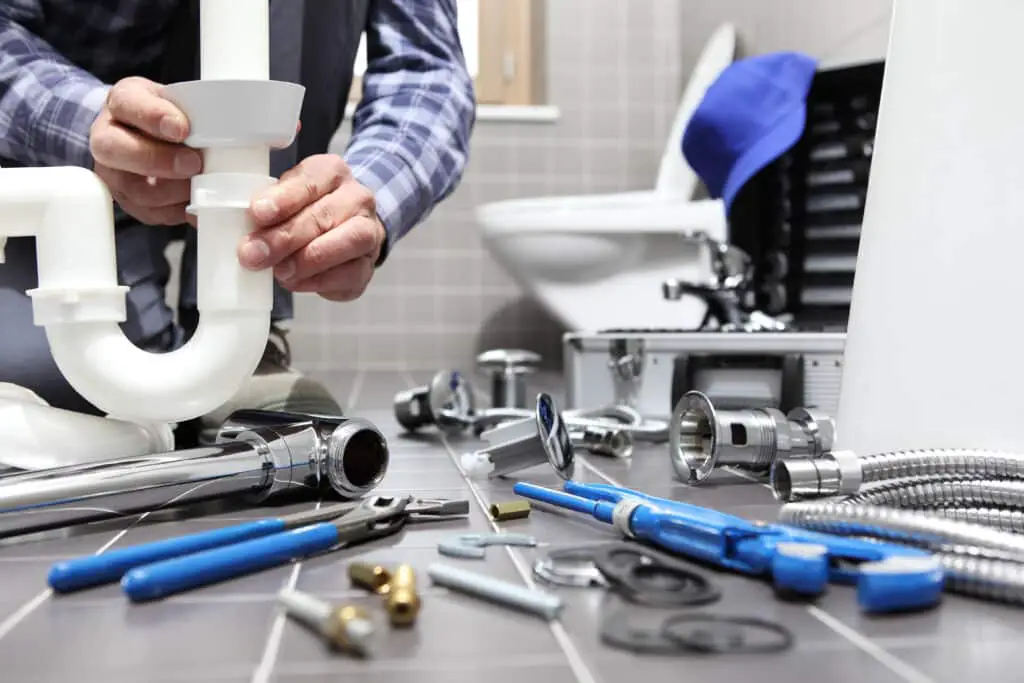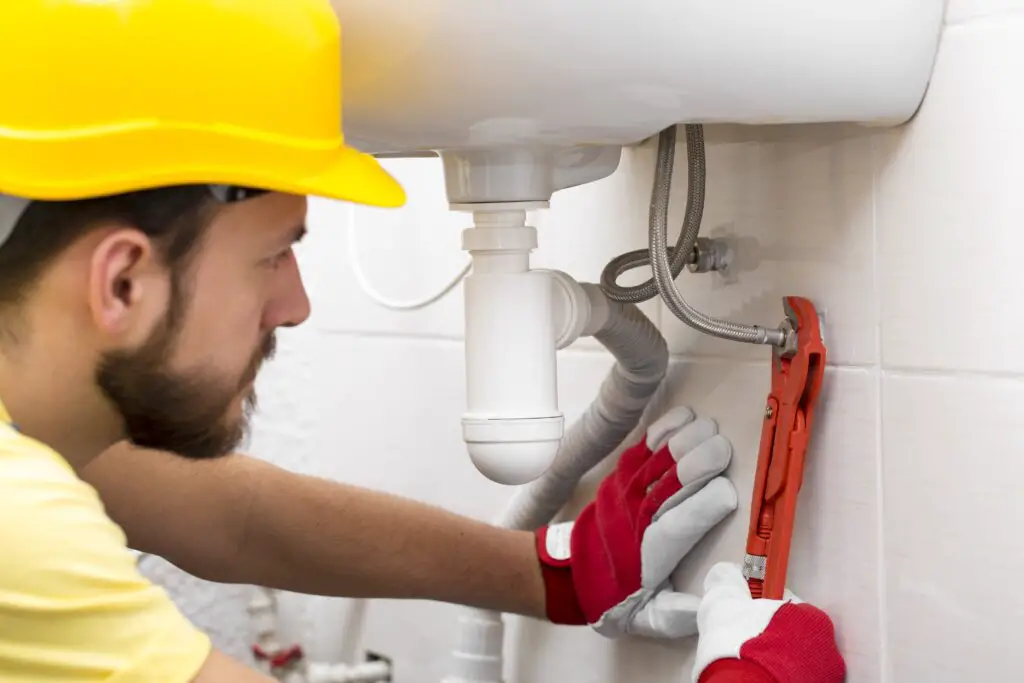What Size Pipe For House Plumbing
Introduction
What Size Pipe For House Plumbing: The size of pipes used in house plumbing affects the overall performance of the system, including water pressure, flow rate, and the ability to handle simultaneous water demands from various fixtures. Choosing pipes that are too small can result in inadequate water flow, reduced pressure, and even blockages, causing inconvenience and potential damage. On the other hand, using pipes that are too large may lead to higher installation costs and unnecessary waste of materials.
To determine the appropriate pipe size for copper plumbing, several factors need to be considered. These factors include the water demand of the household, the number and type of fixtures, the distance between fixtures and the main water supply, and the type of pipe material. Plumbing codes and regulations also play a role in establishing the minimum pipe size requirements for residential plumbing systems.
We will discuss the various pipe materials commonly used, such as copper, PEX (cross-linked polyethylene), and PVC (polyvinyl chloride), and their advantages and disadvantages. Additionally, we will delve into the calculations and sizing methods used to determine the optimal pipe size based on water demand, pressure requirements, and flow rates.

Which size pipe is used in house plumbing?
The most common water main pipe diameter is 6–16 inches, with 8, 10, and 12 inches being utilized. Branch lines serving houses, offices, buildings, and companies range from half an inch to 6 inches.
Residential plumbing often uses 1/2-inch, 3/4-inch, and 1-inch pipes. These sizes are pipe internal diameters. Pipe size varies on household water usage, fixture type, and fixture distance from the main water supply.
Gallons or liters per minute (LPM) are used to measure home water usage. It indicates the total water needed for all house fixtures and appliances. The flow rate and pressure in the plumbing system depend on water demand, thus choosing the right pipe size is vital.
House plumbing
Faucets and toilets use 1/2-inch pipes which consume less water. Typically, these fixtures require 1.5 to 2.5 GPM (5.7 to 9.5 LPM). A 1/2-inch pipe provides enough water and pressure for these fixtures.
Larger fixtures like showers, bathtubs, and washing machines use more water. These fixtures need 2.5–5 GPM (9.5–19 LPM) or higher. A 3/4-inch or 1-inch pipe is used to meet these higher water needs and sustain pressure.
Fixture distance from the main water supply affects pipe size. Friction losses decrease water flow and pressure over distance. Larger pipelines may be needed to compensate for these losses and maintain water delivery. Far-apart fittings may require larger pipes to meet simultaneous demands.
Which pipe is best for house plumbing?
CPVC plumbing pipes are widely used in homes as they are highly durable and can resist high temperatures. CPVC does not conduct electricity, making it a safer option for your home than copper. The easy installation of CPVC makes it best for home projects.
PEX (Cross-linked Polyethylene):Recently, PEX pipes have become popular due to their adaptability and ease of installation. They bend smoothly around obstructions, minimizing the need for fittings and joints. PEX pipes can withstand cold temperatures since they are corrosion-resistant and freeze-resistant. They’re cheaper than copper pipes. UV radiation can destroy PEX pipes, making them unsuitable for outdoor use. Local plumbing codes may also restrict PEX pipe use.
PVC (Polyvinyl Chloride): House plumbing drainage and waste systems employ PVC pipes. They are cheap, lightweight, and chemical-resistant. Installing PVC pipes is simple and requires fewer fittings than other materials. They cannot carry hot water and have lesser pressure than copper or PEX pipes. Since extreme temperatures make PVC pipes brittle, they are usually utilized for non-potable water.
CPVC (Chlorinated Polyvinyl Chloride): CPVC pipes are a variant of PVC pipes that are specifically designed for hot water applications. They have higher temperature and pressure ratings compared to PVC pipes, making them suitable for supplying hot water throughout the house. CPVC pipes are resistant to corrosion and offer good chemical compatibility. However, like PVC pipes, they are not recommended for outdoor use and are primarily used for delivering hot water in residential plumbing systems.
What size is water pipe to toilet?
Toilet supply lines are normally 3/8” in diameter and 9” to 20” long. To buy a part that fits your installation, measure accurately. Flexible lines are ideal since they can be bent as needed.
Sometimes 3/8-inch pipes are used for toilet water supply lines. This smaller size is utilized when water pressure is low or space is limited. A 3/8-inch pipe may have slightly lower water flow than a 1/2-inch pipe. It can still supply enough water for a toilet.
When choosing a toilet water supply line pipe size, consider the distance between the water source and the toilet and any other fixtures that share the water line. Longer distances or more fixtures may require a longer pipe to provide water flow and pressure.
Always check local plumbing codes and regulations for toilet water supply line requirements. These rules ensure the plumbing system is safe and delivers water effectively to all fixtures. Compliance with these requirements is essential for plumbing system performance and lifespan.
Generally, toilet water pipes are 1/2 inch in diameter. This size provides enough water flow and pressure for toilet operation. However, municipal plumbing standards may mandate a 3/8-inch pipe in certain situations.

Is PVC pipe good for plumbing?
Polyvinyl Chloride Pipes (PVC) pipes won’t rust, corrode, or degrade over time, are excellent for sink, toilet, and bathtub drain lines or vent stacks, can readily handle high water pressure, and are inexpensive and easy to work with. Their biggest drawback is that they can only be used for cold water.
Affordability: PVC pipes are generally more affordable compared to other pipe materials such as copper or stainless steel. This cost-effectiveness makes them a popular choice, especially for budget-conscious homeowners or plumbing projects with cost constraints.
Corrosion Resistance: PVC pipes are highly resistant to corrosion, which is a significant advantage in plumbing systems. Unlike metal pipes, PVC pipes do not rust or corrode when exposed to moisture or chemicals commonly found in water supply systems. This property ensures long-term durability and reduces the risk of leaks or pipe failures.
Chemical Resistance: PVC pipes have excellent resistance to various chemicals, making them suitable for a wide range of plumbing applications. They can handle both acidic and alkaline substances without degrading or deteriorating. This characteristic is particularly beneficial in areas with aggressive water conditions or where certain chemicals are present.
Lightweight and Easy Installation: PVC pipes are lightweight, making them easy to handle and install. They can be cut, joined, and connected using simple tools and techniques. Their lightweight nature reduces the need for heavy machinery during installation, making the process more convenient and cost-effective.
Low Thermal Conductivity: PVC pipes have low thermal conductivity, meaning they do not easily transfer heat. This feature helps maintain water temperature in pipes, which is beneficial in hot and cold water delivery systems.
How do I calculate water pipe size?
Three Steps to Sizing Plumbing Piping Systems
- Add up the total number of water supply fixture units (wsfu) required in the facility.
- Estimate demand using the table from the IPC that correlates wsfu to expected demand.
- Size the pipe using demand vs. friction loss curves found in the IPC charts.
Determine the Flow Rate: Pipe water flow rate is the flow rate. GPM or LPM are typical. Water pressure and the number of fixtures in use affect flow rate. Define the maximum flow rate for simultaneous fixture use.
Consider Pressure Requirements: The pressure required in the plumbing system depends on the specific needs of the fixtures and appliances. Some fixtures, such as showers, may require higher water pressure for optimal performance. Consult the manufacturer’s specifications or plumbing codes to determine the minimum pressure requirements.
Use Pipe Sizing Tables or Calculators: Pipe sizing tables or online pipe sizing calculators are available to help determine the appropriate pipe size based on the water demand, flow rate, and pressure requirements. These resources provide guidance on the recommended pipe size for a given flow rate and pressure drop. The tables or calculators may consider different pipe materials and account for factors such as pipe length and fittings.
Consider Pipe Material and Friction Loss: Different pipe materials have varying friction loss characteristics, which can affect water flow and pressure. Take into account the friction loss associated with the selected pipe material and consider it in the calculation. Friction loss depends on factors such as pipe length, diameter, fittings, and flow rate.
What size PVC is used for plumbing?
The most popular PVC pipe sizes are 1½ inches (for kitchen sinks, bathroom vanity, and tubs), 2 inches (for washing machines and shower stalls), 3 inches (for toilets), and 4 inches (for sewage connections).
These sizes are approximate and may vary depending on local plumbing codes. Local ordinances may set minimum pipe sizes based on water demand, flow rates, and pressure. To ensure plumbing system safety, these requirements must be followed.
Consider the total water demand, the number and type of fixtures, and the desired water flow and pressure when choosing PVC pipe size for a plumbing project. A skilled plumber or local plumbing codes can help you choose the right PVC pipe size.
Plumbing uses PVC pipes of various sizes. Plumbing PVC pipe sizes depend on water demand, flow rates, and pressure. Common diameters include 1/2 inch, 3/4 inch, 1 inch, 1 1/2 inch, and 2 inches, depending on fixture type and plumbing system needs. Following local plumbing rules assures the right PVC pipe size for a safe and efficient plumbing system.
Which pipes are best for house construction?
PVC Pipes
These are easy to install and do not require threading application. PVC pipes as mentioned before cost less than G.I. Pipes and thus has found a huge application in plumbing work for building construction work. PVC pipes cannot be used in hot water application.
PEX (Cross-Linked Polyethylene) Pipes:
Due to its versatility and ease of installation, PEX pipes are becoming more popular. Their flexibility makes it easy to navigate obstacles, and they require fewer fittings and joints. These corrosion-resistant PEX pipes are long-lasting.
They have excellent freeze resistance, making them ideal for cold weather regions. PEX pipes are cheaper than copper pipes and can supply hot and cold water. However, it’s important to note that PEX pipes may have restrictions in some areas due to local plumbing codes.
PVC (Polyvinyl Chloride) Pipes:
PVC pipes are commonly used for drainage and waste systems in house construction. They are lightweight, affordable, and resistant to chemicals, making them suitable for various applications. PVC pipes are easy to install and require fewer fittings compared to other materials.
They’re great for wastewater disposal and venting. PVC pipes have lower temperature and pressure ratings than copper or PEX pipes, making them unsuitable for hot water supply systems.
CPVC (Chlorinated Polyvinyl Chloride) Pipes:
CPVC pipes are a variant of PVC pipes that are specifically designed for hot water applications. They have higher temperature and pressure ratings compared to standard PVC pipes, making them suitable for delivering hot water throughout the house.
CPVC pipes are corrosion-resistant and offer good chemical compatibility. They are affordable and easy to install, making them a viable option for hot water supply systems in house construction.
Which water pipe is better?
Copper. Due to their durability and reliability, copper pipes are the most used plumbing pipe. They resist corrosion, are good for hot and cold water, and are easy to manage.
Copper pipes last longer but cost more. PEX pipes are versatile and easy to install, however some places restrict their use. Lightweight and inexpensive PVC pipes cannot handle hot water. Hot water CPVC pipes may not work in all plumbing systems.
Local plumbing laws, water quality, and plumbing system needs. Plumbing experts can assist you choose the right water pipe material for your project.
The optimum water pipe material relies on durability, affordability, water quality, installation convenience, and project needs. Copper pipes last but cost a lot.
PEX pipes provide versatility and ease of installation but may have restrictions in some areas. PVC pipes are lightweight and affordable but not suitable for hot water applications. CPVC pipes are designed for hot water use but may not be suitable for all plumbing systems. Carefully evaluating these factors will help you make an informed decision and select the water pipe material that best meets your specific needs.

Conclusion
Choosing pipes that are too small can lead to inadequate water flow, reduced pressure, and potential blockages, causing inconvenience and possible damage. Conversely, using pipes that are too large may result in higher installation costs and unnecessary waste of materials. Therefore, striking the right balance is essential to optimize the performance of the plumbing system.
Understanding the available pipe materials, such as copper, PEX, and PVC, along with their advantages and disadvantages, empowers individuals to make appropriate choices based on their specific requirements and budget. Additionally, complying with plumbing codes and regulations ensures that the minimum pipe size requirements for residential plumbing systems are met.
By following proper calculations and sizing methods, homeowners can determine the optimal pipe size based on home plumbing water demand, pressure requirements, and flow rates. This not only guarantees an efficient water supply to various fixtures but also contributes to water conservation and cost savings over time. The right pipe size for house plumbing involves careful consideration of multiple factors. By making informed decisions, homeowners can enjoy a reliable and efficient plumbing system that meets their needs while promoting water efficiency and long-term savings.








